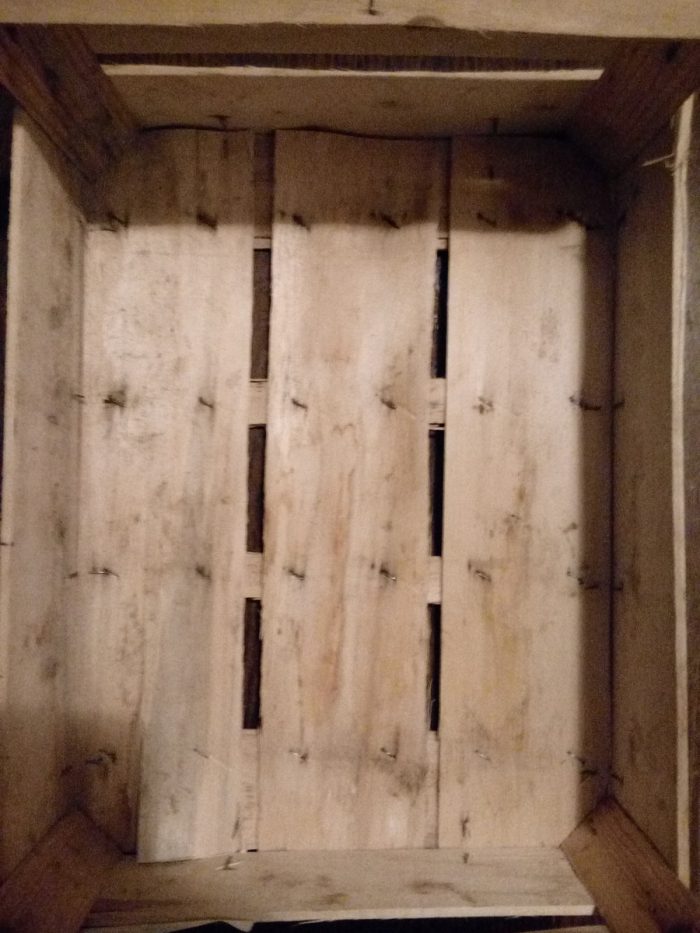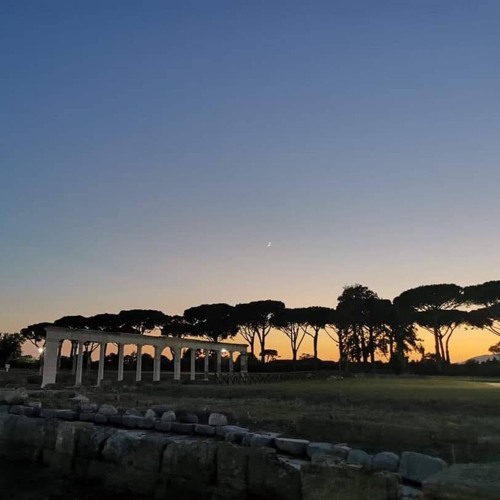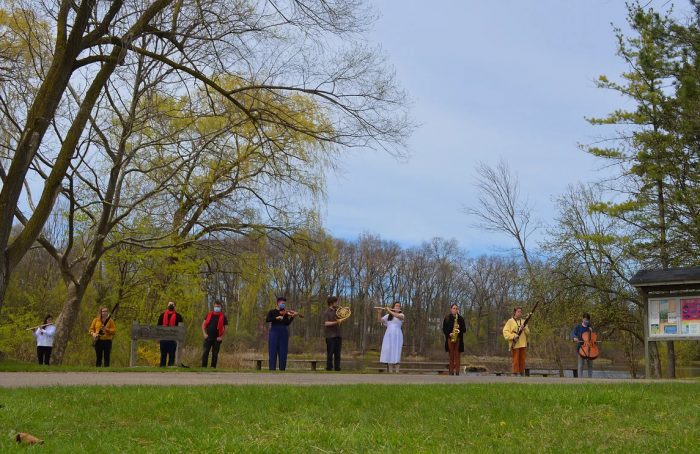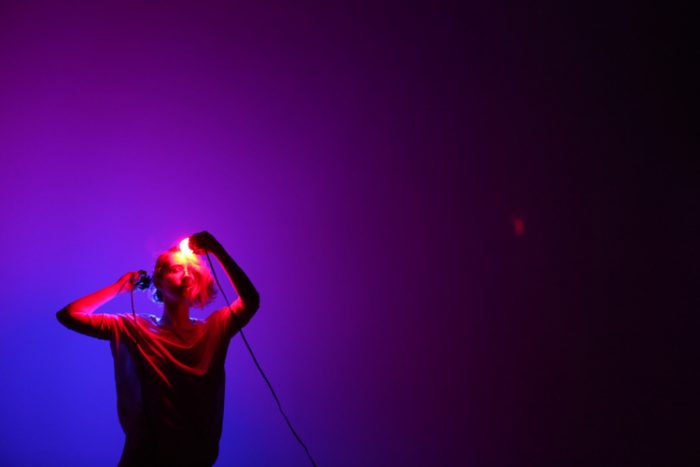Sunday 26 February
LIVE ORDER HERE:
1-Domenico De Simone
2-MaelineLi
3-Alfredo Cerrito
4-Anastasia Clarke
5-Anju Singh
6-Benoit Bories
7-Brian Alexander
8-Nicolas Melmann
9-Britney25
10-Chelidon Frame
LIVE AUDIO HERE
YT :
britney25

britney25, completely incomplete and big DIY lo-fi trend. in 1990 my self-taught exploration of music and since then the projects have continued to follow one another.
traversée de scierie – manipulation of instruments a blade of a crate in each hand. if a tree can emit, maybe it receives see hears!? interpretation of what a piece of wood could capture and hear “from the tree to the crate”.
Maeline li

Maeline Li is an artist born in 1994 and living in Ile-de-France.
After studying Applied Arts at the Duperré School and doing her first cycle of Art license at La HEAR, she obtained her DNSEP with honors at ENSA Bourges in 2019. She participated, following her diploma, in a year of post-diploma research in the ”Offshore” program in Shanghai. Coming from a family of Chinese circus artists who arrived in Europe in the 1940s, her work is governed by questions of cultural heritage and territory, by the prism of distance and migration.
His research has been shown in various places in Ile-de-France, Alsace, Bourges, Shanghai, Marseille, Basel and Freiburg.
The Unknown, it’s about what you can’t see, about what might be on the edge of the horizon. We can’t really be sure what’s going on there, just speculate on what we already know. The mist is a furtive possibility of another place, for a moment. Like a cloud, a set of micro-particles of water, which have crossed all spaces without borders or walls. All these particles could be everywhere and nowhere at the same time, touched by so many different soils, carrying within them all the particularities of each one. Water is the ultimate migrating element, nomadic in its essence. Carrying so many voices in its flow, always the same, yet subtly different each time. The voice of the ground like particles, not one but several, all stopped in space-time, captured at a key moment in their progress.
This buzzing that gives rise to traces of a last stay in the invested space.
Alfredo Cerrito

Alfredo Cerrito is an italian saxophonist, composer and arranger and orchestra conductor. After having completed his academic studies in Saxophone, he has studied traditional Composition with M°C. Perugini and M°G. Panariello and he’s currently a pupil of M°E. Martusciello, in the Electroacustic Composition Class at Neaples Conservatory. In January 2009 he founded, together with the pianist Anna Lisa Giordano, the “Duo 8 e 15”, with which he has won various national and international chamber music competitions. He performed throughout Italy – in prestigious venues such as, for example, the Concert Society of Milan (Auditorium Gaber), the Auditorium “Monteverdi” of Mantua, Palazzo Monsignani in Imola, the “Accademia Filarmonica Romana” and in many other locations – and abroad (Switzerland, France, Iraq, Finland, Germany, Greece, Slovenia, Portugal, Malta, Austria, Vietnam). As a very active interpreter in the field of contemporary music, he performed several first world performances. He was the winner of the first prize in various national and international saxophone competitions, including Jazz ones. In 2022 his acousmatic work “S.T.U.P.M.” was selected to be performed at “InSonora 12” in Madrid.
In 2021 an artistic collaboration began with the artist Andrea Greco: he will take care of soundtracking various exhibitions, starting with the “Limbica” exhibition in May 2022. Since 2017 he has been principal conductor of the “Orchestra Filarmonica del Golfo” and has collaborated with the Vietnamese National Orchestra, the “Il Clavicembalo Verde” Orchestra and the “Classicaviva” Orchestra. Hecollaborates on a regular basis with the singer Marco Castoldi (aka Morgan) and , inaddiction to the concert activity, he teaches at the Music Academy “Accademia Musicale del Basso Lazio” based in Minturno (Italy).
ICANOM
The composition originates from the idea that every material in nature, including human being, is subjected to continuous transformations, constantly changing without losing its intrinsic qualities, those characteristics that make it unique. The composition is entirely based on a generating sound sample and all the other musical materials (textures and impulses) are obtained through sound manipulation. In the general arch, several electro-acoustic windows open; these windows highlight the sonic and spectro-morphological qualities of the sound material in different ways, by touching all the various degrees of subrogation, thus creating different sound worlds. In the macrostructure, the composition can be considered a great texture that metaphorically corresponds to the vital arch (birth – growth phase – decay – death).
Daria Baiocchi

DARIA achieved an MA in piano, in classical composition and electronic music. She also owns a degree in “Classical Literature” from the University of Bologna(Italy). Her compositions have been played in theaters and concert halls throughout the World and broadcast by several Radio stations (Holland National radio, France,Portugal, UK, USA etc). As music composer and composer for electronics she won National and International selections in Argentina, Netherland, Ireland, Germany, Italy, England, Hungary, USA, Bulgary, Poland, Lithuania, Canada, South Korea, Mexico, Cyprus, Sweden, France, Spain, Greece, China, Australia, Slovenia. As composer for videoart, the works featuring her music won expositions in India, Croatia, Sweden, Mexico, Greece, Poland, Swiss, Colombia, England, USA, Belgium, Bulgary, Argentina, Portugal, Spain, Ireland, Australia, Mexico and have been shown by the International ART TV.
She’s actually main Professor of Harmony and Music Analysis in Fermo Conservatorium. Daria is the the Director of the Sound Art Museum Online in Ascoli Piceno and, as volunteer, the Artistic Director and speaker, as volunteer, of the Radio Program “Classica and…” in FM in central east Italy: new performers, contemporary music composers and sound design composers.
GOGLEMAPS
This piece is in Googlemaps in Bletchley Park, well known as X Station,where Turing was working.
— Dedicated to Alan Turing and all genius minds who saved lives —
SYNOPSIS:
Alan Turing had a brilliant mind who changed history. This guy was not like everyone else, because he lived off mathematics. His great passion led him to great discoveries and to combine calculations with the model of the mind. His studies led him to become the father of computer science and his test became the basis for the creation of artificial intelligence. In Latin Codex meant a waxed writing table while today it means a set of symbols or signs, that have the same origin and a function already determined. To use a code, it’s necessary a series of rules that establish a combination that allow the creation of a coherent message. When a message is transmitted it must be decrypted by implementing a common code and in this way both parties will be able to fully communicate. The sender and receiver know and have to use the same code.
Benoit Bories
Benoit Bories is a sound designer. He has produced sound creations for France Culture, Arte radio, RTBF, RTS, Deutschland Radio Kultur and ABC. His sound creation activity comes originally from the sound documentary. It has gradually transformed over time towards more hybrid productions combining forms borrowing from sound art, acousmatic composition and field recording while retaining this desire to document societal issues. His documentary filmmaker’s gaze always pushes him to tell the story of the intimate in an attempt to make a universal resonate. He teaches documentary sound creation at Phonurgia Nova, ENSAV Toulouse, at the Master 2 Art and com of theatrical studies at Jean-Jaurès University and works with several occasional people.
Akari Komura

Originally from Japan, composer-vocalist, Akari Komura (b.1996), grew up in Tokyo and spent teenage years in Jakarta, Indonesia. From an early age, she has been involved in performing arts through playing the piano, singing, and dancing modern ballet. Her interest in somatic practice and embodied consciousness is central to her creative process. Akari imagines her score as an invitation for the performers to contemplatively engage with listening and soundmaking. She is interested in curating a participatory performance space that invites a community of musicians and listeners for a collective conscious, meditative, and healing experience. Akari’s artistic exploration is oriented towards heightening physiological and psychological perception attuned to the ecological sonic soundscapes. The works of Pauline Oliveros, Yoko Ono, and Hildegard Westerkamp are especially influential in her artistic practice. Akari’s breadth of work spans multimedia/electronics, vocal music, chamber ensemble, and interdisciplinary collaborations with dancers, visual artists, and architects.
Breathe with the Wind is a site-specific sound installation/sound ceremony that explores the ultimate dimension of intimacy with the earth. The work engages to curate a contemplative space for the participants to find an awareness or closer relation to nature. In particular, the air element is symbolic to the work through the perception of winds enfolding our inhaled and exhaled breaths as a collective air.
Chelidon Frame

Chelidon Frame is an experimental electronic music project that mainly works with field recordings, radio interferences, guitars and processed sounds.
His installations are experience-based and suggest a dialogue between the location (both virtual and physical) and the sounds proposed, aiming to deliver a message in the simpler yet most effective way. The use of code, data analysis and data-driven sounds, allow information to be experienced anew. In his studio works and live sets, different layers of sounds – guitars, synthesizers and custom-made instruments – piles up creating unexpected new
soundscapes.
The Asynchronous Drone Orchestra is a remote collaborative project where different electronic musicians are asked to share one (or more) ten minutes sound – be it a drone, a field recording, or a more elaborate soundscape – following a minimal set of rules. All those fragments and noises are then mixed and combined in a long and coherent track, resulting in a choral soundscape where the result is bigger than the sum of its parts. The first iteration has been presented during the 2021 Drone Day, and the second one in Since 2022 is part of Camp Radio bimonthly schedule.
Nicolas Melmann

Nicolás Melmann (b. 1981 in Argentina) explores the social and poetic aspects of sound in his transdisciplinary projects. Melmann experiments with technology, creating linear and nonlinear narratives and working across different media. His compositions draw from electro-acoustic music and generative ensemble music, featuring experiments with sensors and hydrophones, data sonification, sound cartographies, installations, interviews, and field recordings. Melmann uses sound as the raw material for his work and as a solo musician creates sonic pieces and installations using electronics, unconventional instruments, field recordings, and spoken word. He also has produced music and sound for video games, television, film, dance, and theater. Active for more than 16 years, Melmann has released six albums and toured in Asia, Europe, and North and South America. He has won prizes and awards including the Virtual Partnership (Goethe Institute), Beques Barcelona, (Spain), National Arts Foundation (Argentina), the Kosice Biennial, Asylum Arts (New York), and participated in educational projects and workshops around new music and sound art at Garrison Institute (New York), ZKM (Germany), CMMAS (Mexico), Fundación Telefónica (Perú). Along the way, Melmann has shared the stage with artists such as Nicola Cruz, Robert Lippok, Lydia Lunch, Max Cooper, Richard Devine, and many others.
The sound window is an interactive – visually reactive sound piece hosted on a web page, the frequencies of an electroacoustic composition are interpreted into a real-time cinematic landscape. Created during the lockdown the piece is inspired by Erik Satie´s «furniture music» concept, the audiovisual device helps to design our own soundscape indoors as a way to connect sound with the outside world, to design our own soundscape indoors, inviting us to relax, becoming functional to indoors activities, such as reading, writing, computer work, yoga, etc. Combining sounds and musical textures generated with instruments and electronics, the different layers of sound, faint and delicate, can be managed through a virtual mixer allowing users to carry out their own sonic combinations and compositions, creating their own soundscapes, having audio manipulation tools (delays, reverbs) users can intervene the musical sound palette.
Anastasia Clarke

b. 1987, New York
acceptable pronouns: they/them or she/her (fluid)
Anastasia Clarke’s live embodied electronic music performances consider therole of the musician as a healer, activator, and sonifier of the unheard and unseen. Working as a performer-composer and artist-engineer, they use creative music technology such as controllers, custom-built instruments, and performing systems, as well as compositional approaches informed by intuitive work, to splice and dissolve narratives into ineffable new shapes and stories.
In recent years, Anastasia has performed live soundscapes designed for the strategic application of listening modalities. Bringing together synthesis, field recording, and sample-level sound design as artifacts of attention and intention, their durational performances invite listeners to experience shifts in their own sensations of place, scale, space and time. In defiance of any notion of “easy listening,” Anastasia chisels thick ambient textures into character formations using a smattering of noisy activations and idiosyncratic sonic sigils. Underlying each performance is a steadfast trust in improvisation and risk-taking, wielded to reveal the shifting fault lines that exist in our aesthetic and technological systems, perceptive faculties, and societal structures.
Domenico De Simone
Professor of Electroacoustic Composition at the “Umberto Giordano” Music Conservatory of Foggia. Graduated in Piano, Jazz, Composition and Electronic Music. He also graduated in Composition advanced course at the Accademia Nazionale of Santa Cecilia under the guidance of Azio Corghi and in Electronic Music – 2nd academic level, with the highest marks and honors, at the Conservatory of Santa Cecilia under the guidance of Giorgio Nottoli. He enhanced his knowledge by attending the Accademia Chigiana in Siena, where he was awarded with the diploma of merit in Music for Film by Ennio Morricone and thediploma o f merit in Composition by Franco Donatoni.
In 1995, 1996 and 1997 he was awarded by the S.I.A.E. His compositions have been performed in more than one hundred concerts in Italy and abroad (China, Latvia, Canada, Chile, Argentina, Romania, Malta, USA, Ireland, UK, Spain, Austria, Brazil, etc.) and broadcasted by RADIOTRE.
Trace Bloom (aka Brian Alexander)
Brian Alexander is a transdisciplinary Artist who’s works are specifically focused on the unseen, unheard, and under served life forms among us. His practice involves the development of one off tools, processes, and programs in order to realize the space beyond our collective limitations in perceptual bandwidth. Believing the adage ‘a fish cannot tell you about water’, Alexander’s works point towards the gaps between human intent and understanding by bridging the Earth’s deeper signatures and reconnecting us all in a grounded and immersive experience.
His 34 year professional career spans public and commercial Art endeavors including sculpture, installations, sound and performance, as well as product and technical process development. He currently holds 28 patents with permanent works in MOMA NY, Cooper Hewitt, and Smithsonian.
In 2011 He established Trace Bloom as a blanket field of exploration and artistic research for all forms of media in an immersive, and fully inclusive approach. Distilled as definition, Trace Bloom is; to loosely outline perceived phenomena, to develop the tools and conditions for emergent expression, and to allow that expression to grow unencumbered to a point of perceived resolution or shared understanding.
AUDIOBLAST : a network festival
Festival of sound creation using the network as a place of diffusion, it consists of many audio practices in the network, experimental music, drone, noise, field recordings, sound poetry, electronics and contemporary music. The sound and musical practice in the network becomes more and more important, the public is very interested in this kind of new practice and Apo33 continues to develop this unique festival all over the world! There is no equivalent. It is a festival associated with new musical and sound forms implemented with digital tools that make it possible to cross the concert, the performance and a form of exhibition where the public can sit down, listen to the concerts, stroll and exchange with online artists during their “live”; offering the possibility of “chatting” live with the musicians.

